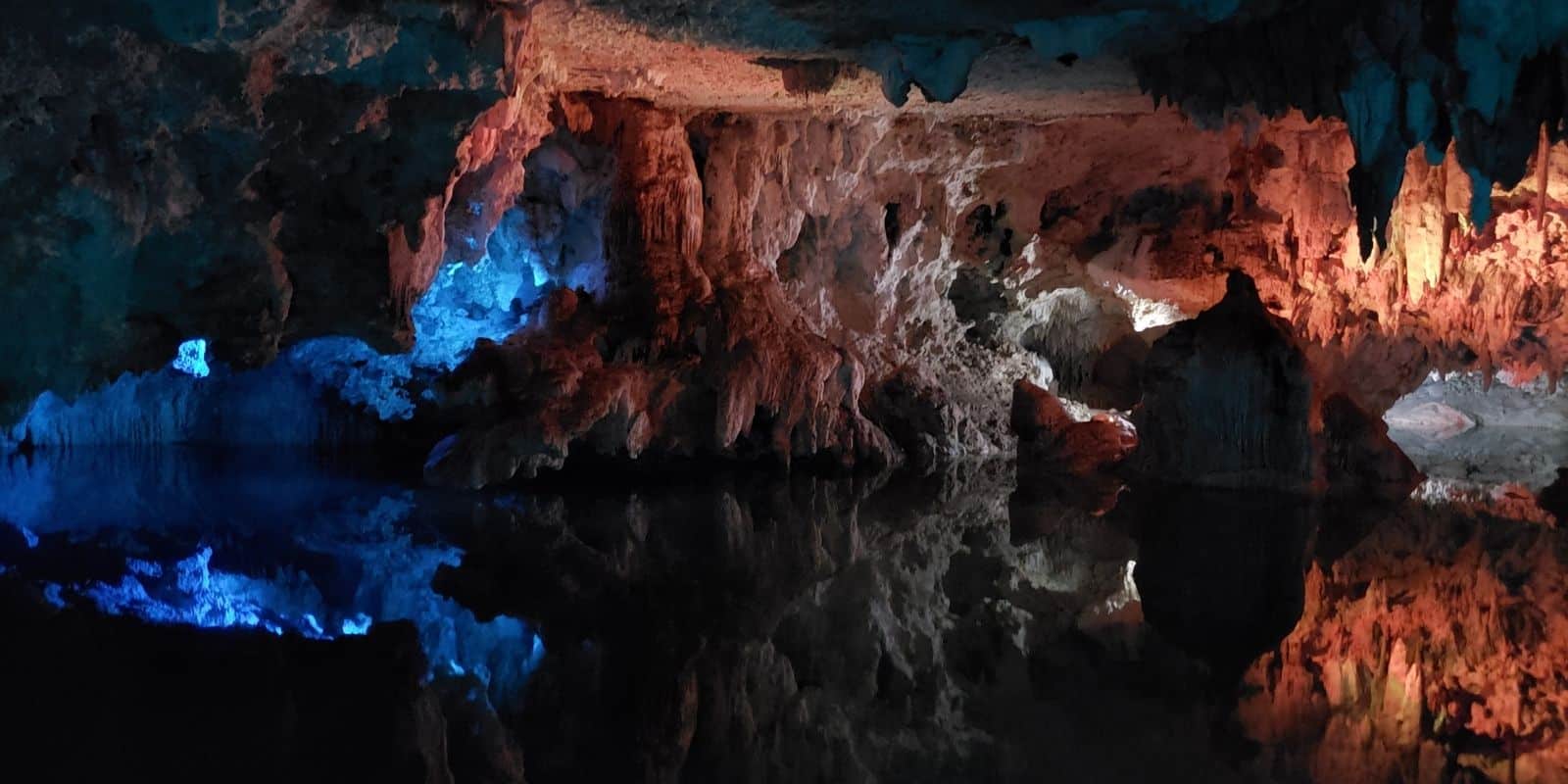Caracol Cenote: Why is it called that?

Not all cenotes are alike. In open cenotes, for example, people are looking to have a good, refreshing, relaxing time. That certainly is not the case in the darkness of cave cenotes, such as Caracol Cenote. The experience is quite different there. One of wonder, discovery… and even a little fear.
Caracol Cenote is part of the Sac Aktun System
Did you know cenotes are usually connected? Caracol Cenote is one of the many in the Sac Aktun system. The what now? I hear you ask. Quite a few of the cenotes in the Riviera Maya, Caracol included, are a single system of underwater rivers and caves: the Sac Aktun system. That means that, if you could breathe underwater, you’d swim from one cenote—the Gran Cenote, say; or the Dos Ojos cenote—to another. In fact, that’s exactly what some diving tours do.
Inside the Caracol Cenote
Rather than the usual wooden steps, these, at the entrance to Caracol Cenote, are lined with metal and are quite steep. Wet swimmers are constantly passing through here, so they can get quite slippery—be careful. Though lit, this place is still pretty dark and can be quite daunting at first. In just a few minutes, your eyes will get used to the darkness, and then you’ll get to see the wonderful underworld you’ve walked into.
As is the case with most cenotes, this water is crystal clear, which is good, because there are plenty of rock formations under the surface—and that’s not even the most interesting thing. Cenotes are known to have been Mayan ceremonial places. So, to celebrate that, there are several Mayan statues under the water for you to find. It does give you quite a thrill when you do like you’re Indiana Jones or something.
Why is it named Caracol?
First, you think caracol means snail and think the name doesn’t make much sense in this context. Then you find seashell fossils embedded on the walls of this place. That’s because cenotes, at some point, were covered by the ocean. Then you find out caracol doesn’t only mean snail, but can also mean seashell. Not only does the name suddenly start making sense, but Caracol becomes one of the most beautifully named cenotes.
